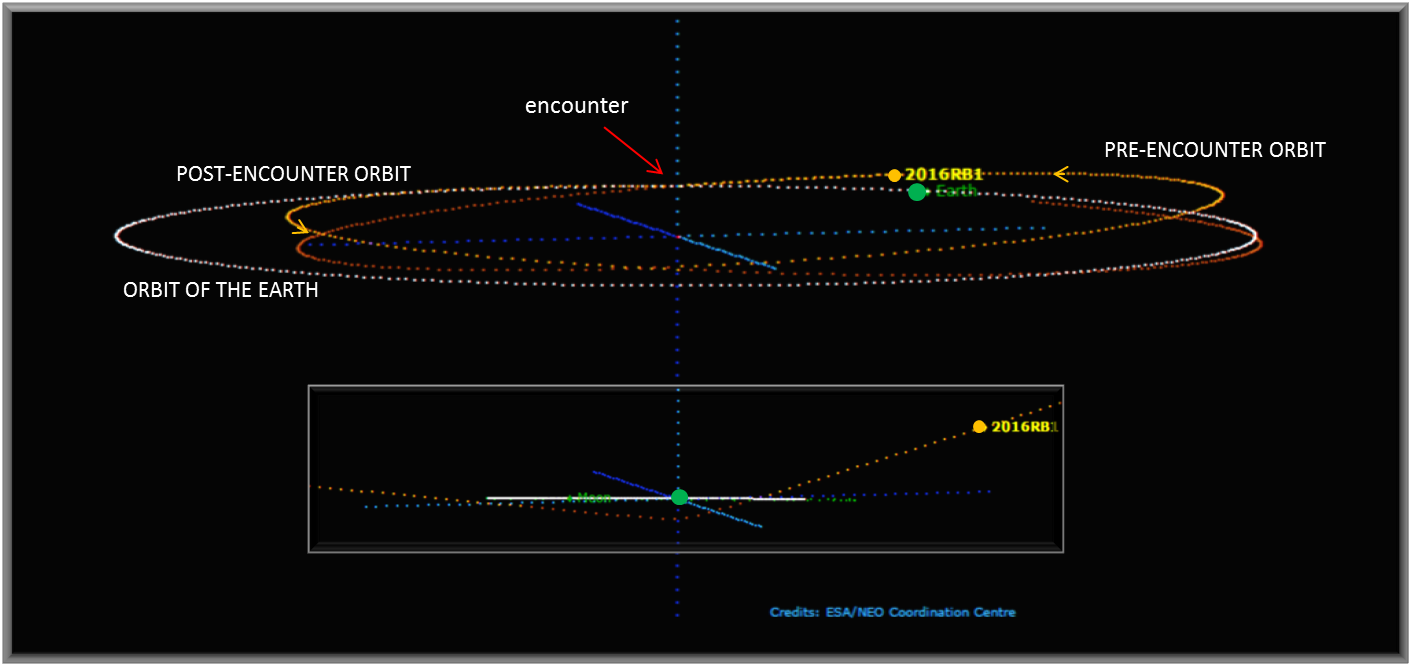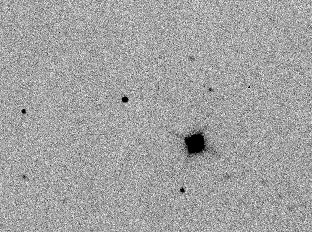An NEO over Antarctica
An NEO over Antarctica

operator neo
Asteroid 2016 RB1 has hit the news because of a peculiar close passage on 7 September 2016 at 19:20 CEST. About the size of a cottage, the asteroid flew past our planet at an altitude of 34000 km, roughly the same as the so-called "geostationary ring" where most telecommunication satellites reside. Yet it posed no hazard neither to our planet nor to the satellite operators. Despite having been discovered only 24 hours before closest approach, the orbit became quickly so well constrained to ensure that the computation of the incoming flyby had the necessary accuracy to rule out any Earth impact solution. As a matter of facts already in the morning of 7 September 2016 RB1 was present in our close approaches list but not in the updated Risk List, which ranks the objects for which a non-zero impact probability is detected.
The danger to geostationary satellites would be possible (although very unlikely) only if the closest approach distance were reached near the Earth equatorial plane, where the geostationary ring is located. But 2016 RB1 was heading to the South pole, scoring the minimum altitude just over Antarctica. This had an interesting consequence: it is well known that a polar encounter geometry causes the gravitational pull of our planet to change the asteroid orbital inclination and 2016 RB1 was no exception – but with a peculiar behaviour.
The asteroid nodes were switched, meaning that while before the 7 September encounter the asteroid used to cross the ecliptic in that point coming from above, now the orbit is turned upside down after Earth gravity bended upward the asteroid trajectory. The effect is clearly shown in the diagram above, which has been computed using the NEO Coordination Centre orbit visualizer. Zooming into the Earth encounter geometry is also displayed thanks to a forthcoming new functionality, which will be soon available on our website.


The top panel shows the geometry of the 2016 RB1 Earth encounter. The bottom images show the flyby diagrams: the red arrow indicates the distance from the Earth at closest approach, the green arrow shows the direction of motion [Credits: ESA/NEOCC].
The NEOCC has timely alerted its network of collaborating telescopes to attempt follow-up observations, which were successfully carried out by the team led by Daniela Lazzaro using the OASI telescope located in Nova Itacuruba, Brazil. The excellent quality of the images obtained by Filipe Monteiro can be appreciated in the animation below showing the motion of 2016 RB1 in the 7 September morning sky.

2016 RB1 animation based on images taken at the OASI observatory [Credits: F. Monteiro, H. Medeiros, P. Arcoverde, D. Lazzaro, R.Souza, T. Rodrigues]
